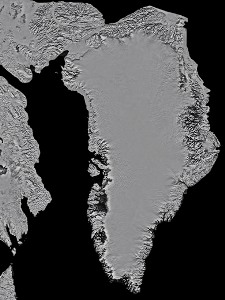There’s enough frozen water in Greenland to raise global sea levels seven meters, and enough in Antarctica to raise levels 65 meters. But the rate of melting is poorly understood, partly because ice-sheet surfaces look so inscrutably white and featureless in ordinary satellite images and to the human eye. Now, a new image-processing technique gives a clearer view of critical features of inland ice.

The technology starts with as many as 94 red and infrared images of the same region, taken by two NASA satellites, Terra and Aqua, with orbits that cross Greenland several times a day. By aligning and averaging values within areas of pixel overlap, researchers tightened resolution from 250 meters per pixel to as little as 150 meters, says Ted Scambos, the lead scientist and glaciologist at the National Snow and Ice Data Center at the University of Colorado at Boulder, who was one of the developers. The new approach also allows rapid reëvaluation of the entire ice sheet overlying Greenland to detect important short-term changes. “What we’ve got is a map that shows details much further inland, much better than before,” says Scambos. “Other images just show the interior of the ice sheet as a blank white surface.” Mark Fahnestock, a geologist at the University of New Hampshire in Durham who collaborated with Scambos, says the technology is key to understanding today’s accelerating ice-sheet melting.
Don’t settle for half the story.
Get paywall-free access to technology news for the here and now.